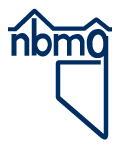Science of the Comstock - Lesson Plans
Home | Tour | Physics | Chemistry | Earth Science | Environment | Scams | Lesson Plans
Lesson Plans:
Introduction
Tour
Physics
Chemistry
Earth Science
Environment
Scams
Scams
Lesson Plan Title: Scams
Author: Jon Price (Web activity), Lindsay Craig (lesson plan)
Unit Title: The Nature and History of Science
Grade Level: 9-12
Educational Standards: From Nevada Science Standards 18.12.7 students explain that scientists have ethical procedures, violations of which have consequences.
From the National Science Education Standards, CONTENT STANDARD F, "As a result of their activities in grades 9-12, students should develop an understanding of personal and community health."
Lesson Overview and Goals: These lessons are designed for the high school Science and Technology student and they directly address their cognitive learning needs while taking in key aspects of the National and Nevada State Science Educational Standards. This directly addresses societal issues as they relate to science. The goal of this lesson is to provide the student interesting human information for consideration of prudent decision making and resulting consequences for the scientist.
Time Resources: This lesson is designed for a time period of 50 minutes.
Objectives: Students will be able to investigate web information of historic scams and articulate a response to the information set forth in regards to projected consequences.
Educational Instruction: Reading web pages - 20 minutes. Summarizing key points from the reading - 10 minutes. Discussion form on key points - 20 minutes.
In order for the student to see that mines cannot open without the geologic concentration of the minerals of interest, the student is asked to make a calculation of the value of gold found in a non-enriched rock.
Calculating How Much Sense (or Cents) A Mining Proposal Makes
Does it make sense that it would be possible to extract gold from a common rock as a scam artist usually proposes? Armed with a few facts about mining costs, a person can figure this out for himself or herself. To find out what typical mining costs are, one could ask about costs at a local mine or quarry. For example, crushed rock or gravel from a quarry typically costs about $5 to $10 per ton. For a metal mine, including costs to construct the mine and mill, typical costs are between $10 and $100 per ton of rock. All rocks contain at least trace or small amounts of gold. A typical igneous, metamorphic, or sedimentary rock will contain about three parts of gold by weight per billion parts (ppb) of rock. The newspaper lists the current price of gold. With the conversion factor that one troy ounce equals 31.1035 grams, the value of gold in a common rock can be calculated. For example, assume the price of gold is $260 per ounce. Then, knowing that 3 ppb can also be written 3 grams of gold/1,000,000,000 grams of rock, calculate:
3 gram of gold/1,000,000,000 grams of rock X (1 troy ounce of gold/31.1 grams of gold) X ($260/1 troy ounce of gold) X (1,000,000 grams of rock/metric ton of rock) = $0.025/ton of rock.
That's less than three cents worth of gold in a ton of common rock. With mining and milling costs in the dollars to tens of dollars per ton of rock, it doesn't make much sense (or enough cents) to try to extract gold from common rocks.
Materials: The materials needed for this portion of the lesson include pencil and notebook paper only.
Assessment: Formal assessment is to be made of the student's ability to summarize the written information contained in the Web page. Informal assessment will come with student discussion of the main points and their own ideas concerning the information presented.


 Home
Home